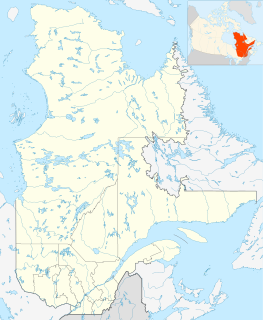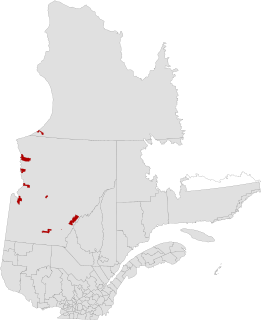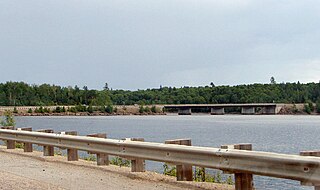| Rivière-Koksoak | |
|---|---|
| Unorganized territory | |
| Coordinates: 57°10′N69°20′W / 57.167°N 69.333°W Coordinates: 57°10′N69°20′W / 57.167°N 69.333°W [1] | |
| Country | |
| Province | |
| Region | Nord-du-Québec |
| TE | Kativik |
| Constituted | January 1, 1986 |
| Government [2] | |
| • Federal riding | Abitibi—Baie-James—Nunavik—Eeyou |
| • Prov. riding | Duplessis and Ungava |
| Area [2] [3] | |
| • Total | 346,429.30 km2 (133,757.10 sq mi) |
| • Land | 307,039.90 km2 (118,548.77 sq mi) |
| Population (2011) [3] | |
| • Total | 0 |
| • Density | 0.0/km2 (0/sq mi) |
| • Change (2006–11) | |
| • Dwellings | 0 |
| Time zone | EST (UTC−5) |
| • Summer (DST) | EDT (UTC−4) |
Rivière-Koksoak is a very large unorganized territory in the Kativik Regional Government territory in the Nord-du-Québec region of Quebec. It is named after the Koksoak River.

The Kativik Regional Government encompasses most of the Nunavik region of Quebec. Nunavik is the northern half of the Nord-du-Québec administrative region and includes all the territory north of the 55th parallel. The administrative capital is Kuujjuaq, on the Koksoak River, about 50 kilometres inland from the southern end of the Ungava Bay.

Nord-du-Québec is the largest, but the least populous, of the seventeen administrative regions of Quebec, Canada. With nearly 750,000 square kilometres (290,000 sq mi) of land area, and very extensive lakes and rivers, it covers much of the Labrador Peninsula and about 55% of the total land surface area of Quebec, while containing a little more than 0.5% of the population.

The Koksoak River is a river in northern Quebec, Canada, the largest river in the Nunavik region. The Inuit village and region's administrative center Kuujjuaq lies on the shores of the Koksoak, about 50 kilometres (31 mi) south from its mouth.
It consists of nearly the entire eastern part of northernmost Quebec. Bordering it to the west is the other large unorganized territory in Kativik, Baie-d'Hudson.

Baie-d'Hudson is a very large unorganized territory in the Kativik Regional Government territory in the Nord-du-Québec region of Quebec. It is named after Hudson Bay.
Its population in the Canada 2011 Census was 0; enclaved within it, however, are various northern villages (i.e., Inuit communities) and one (uninhabited) Naskapi village municipality. In the 2006 census it had a population of 15.
The Inuit are a group of culturally similar indigenous peoples inhabiting the Arctic regions of Greenland, Canada, and Alaska. The Inuit languages are part of the Eskimo-Aleut family. Inuit Sign Language is a critically endangered language isolate used in Nunavut.











